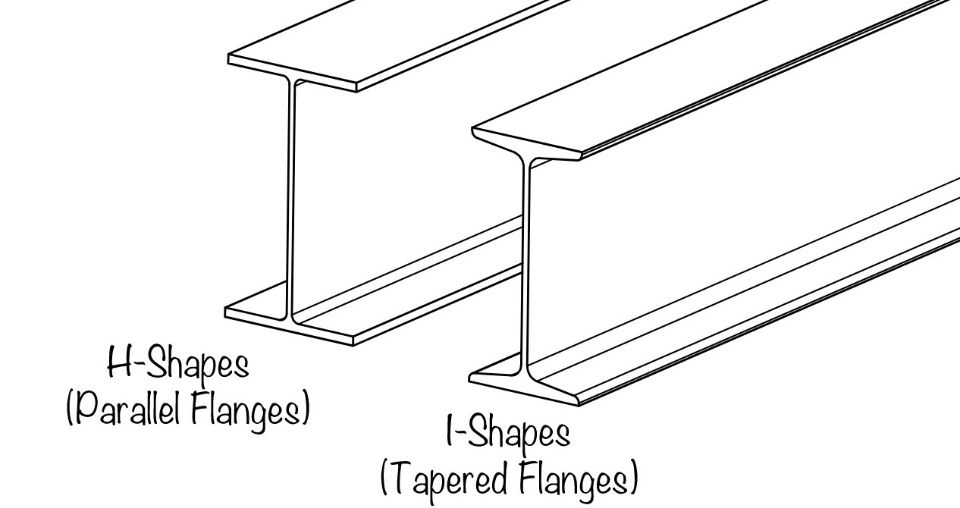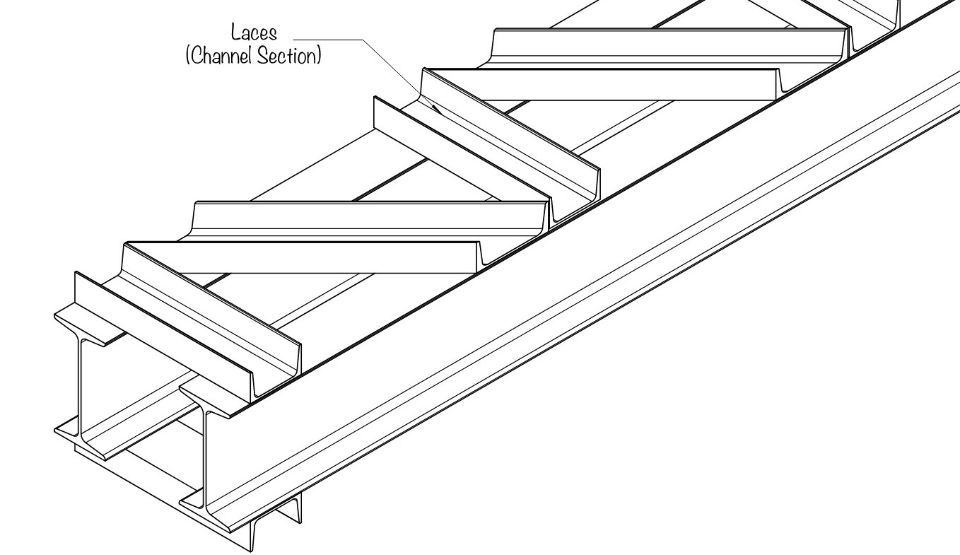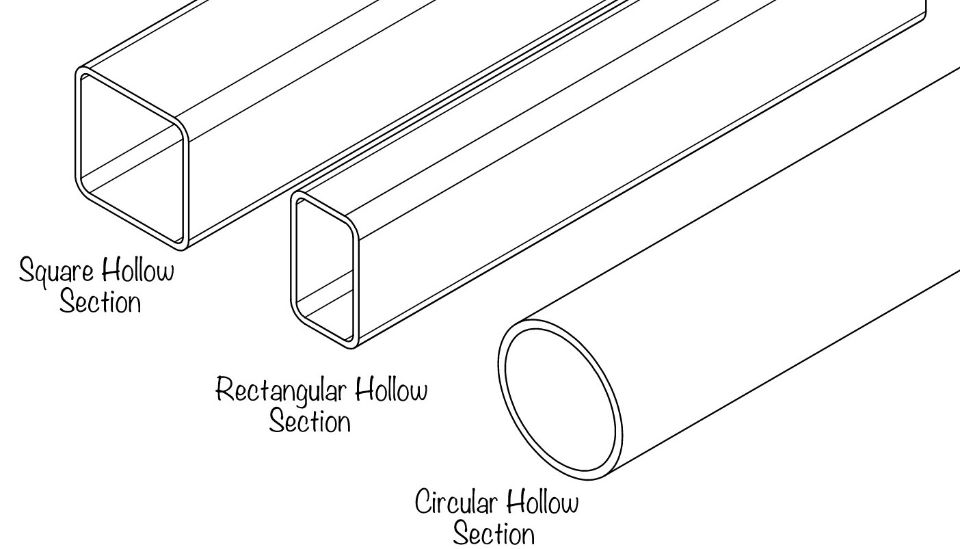To what extent do we take notice of the geometric form of the steel sections utilized in construction and comprehend their importance? We mold steel into various shapes; we mostly use shapes, as shown in the figure below.

The choice of an appropriate shape is on the basis of the type of load and the structural behavior. The design of steel sections depends on the cross-sectional area, section modulus, and radius of gyration. This blog, will learn about the various steel profiles and their proper usage.
I Shape / H Shape
This section resembles the letters ‘I’ or ‘H’. It is suitable for a variety of load combinations other than for pure torsion. This section has a high resistance to bending, making it an efficient option. Its most common applications include beams, girders, columns in structures like buildings and bridges.

While I-beams and H-beams may appear similar and we can also use it interchangeably, they are not identical. Both have two parallel flanges and a vertical web, but I-beams feature a tapered design.
Channel Section
This section resembles the letters ‘C’. This section is highly effective as a secondary support element where load transfer is to the primary structural members. Some of the most common applications of channels as secondary structural members include transverse joists, purlins, wall framing, etc.

Angle Section
This section resembles the letters ‘L’. Angular structural steel sections can be either equal or unequal in size. Both types are right-angled, but unequal sections have varying length axes, giving them an L-shape. This section is highly effective for resisting shear and tension under a point load. Common use angle sections are in braces, connecting members for a built-up member, etc.
T Shape
This section resembles the letter ‘T’. We cut the I section, longitudinally through the web, resulting in a T-shaped cross-section. The application of this section is similar to an I-shaped section with flexural capacity on one side. The T-Shape section’s common application is connecting members for a built-up member, truss chord members, etc.
Hollow Structural Steel Sections (HSS)
Hollow Steel Section beams, as the name suggests, resemble big tubes or pipes due to their hollow cross sections. These beams are available in various shapes including elliptical, rectangular, and round. Engineers widely use them as load-bearing columns within their structures.
Common use of HSS shapes are discussed below:
- Circular Hollow Section: Circular Hollow Sections possess more excellent resistance to torsion than tapered flange beams. The uniform density of the walls throughout the circular shape makes these beams ideal for multi-axis loading applications.
- Rectangular Hollow Section: Rectangular Hollow Sections are widely used in various mechanical and construction applications due to their flat surfaces, which make them ideal for metal fabrication and joining.
- Square Hollow Section: Square hollow sections, similar to rectangular hollow sections but with square cross-sections. These are employed in smaller applications such as columns or posts. However, their shape makes them unsuitable for use as beams as they cannot easily be bolted to other shapes. Commonly we call it ‘box sections’.

Also, Check this post to learn about the properties of steel.
Conclusions
The geometric form of steel sections plays a crucial role in the construction. So, it is important to choose it carefully depending on the behavior they will be subjected to. Understanding the property of steel sections and their proper usage is essential in ensuring the structural stability and integrity of the construction.
Summary of different steel sections and their application are as follows:
- I-shape or H-shape: We use these sections as beams, girders, and columns in buildings and bridges, and are suitable for a variety of load combinations.
- Channel sections: These sections are highly effective as secondary support elements. The common use of these sections is in transverse joists, purlins, wall framing, etc.
- Angle sections: These sections are effective for resisting shear and tension under a point load and are commonly used in braces, connecting members, etc.
- T-shape: They resemble an I-section with a cut-through web and are used as connecting members for built-up members, truss chord members, etc.
- Hollow Structural Steel (HSS): These sections are used as load-bearing columns and are available in various circular, rectangular, and square shapes.
This article was crafted by a group of experts at eigenplus to ensure it adheres to our strict quality standards. The individuals who contributed to this article are:
Author

Sivraj
M.Tech
He is a research scholar working to get a doctorate in structural engineering.

